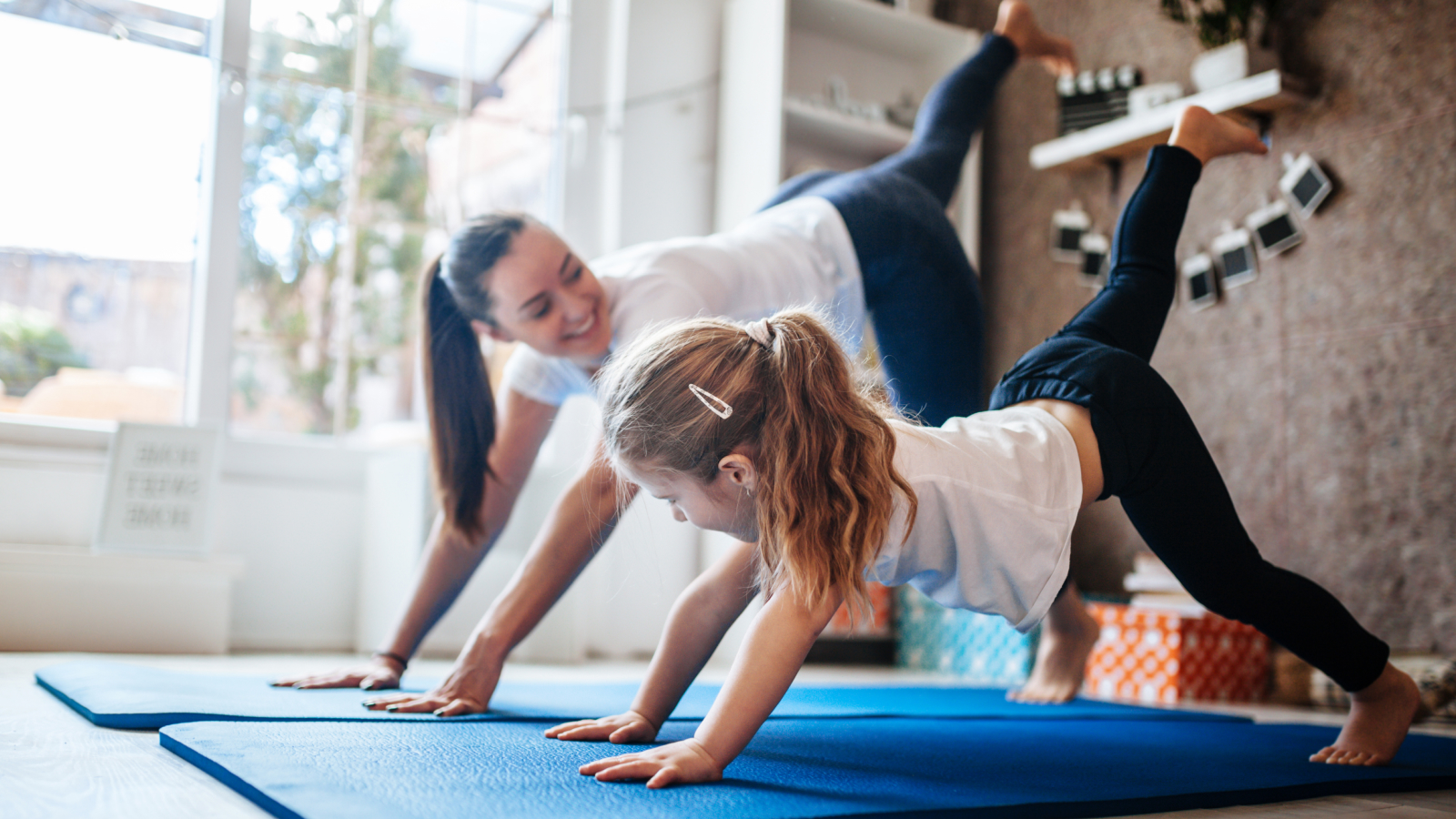Are you an expert yogi looking to spread your love for the practice? Turning your passion into a children’s activity business is not an easy feat, but it is extremely rewarding. After you have successfully done the necessary administrative tasks like creating your budget and setting business goals, you are ready to get to the fun part: teaching!
However, you should not just jump into a classroom without first planning. Writing a lesson plan will help keep you on track during your sessions because it creates structure for your teaching. If you want to know how to write a lesson plan, including templates and examples, see our guide.
In this article, we will outline our top tips on teaching yoga to kids so that you can plan your classes and share your love of yoga with the next generation. And if you want to learn how to write a curriculum, check out our guide!
- How to teach yoga to kids
- ~Children’s yoga teacher training
- Benefits of yoga for kids & toddlers
- Yoga poses for kids
- ~Yoga exercises for kids
- ~Yoga activities for kids
How to teach yoga to kids
Teaching yoga to kids is very different from teaching adults. However, in the end, your goal is the same: to provide your students with a safe, fun, and enriching experience. Here is our advice on how to teach yoga to kids so that you can go into your lessons with confidence.
Segment by age
Children vary in their physical abilities and cognition greatly depending on their age. For example, research shows that babies and toddlers are very good at mimicking the adults around them. Therefore, when you teach yoga to young children, focus on showing the actions so they can copy you. As they get older, let them explore their bodies and create their own poses while still mimicking you and increasing their skills.
Bring stories into class
You can also add a storytelling element into your class so that the children do poses based on what they are hearing. Children love stories - they ignite their imagination, bring them joy, and aid in their learning. You can act out fairy tales and movie scenes they like so they connect yoga with their favorite stories.
Do yoga, too
The children can’t mimic you if you aren’t doing the poses, too. Make sure you know that you need to be as active in the class as they are. Seeing you try, and even make mistakes, will help them feel less self-conscious in class and more open to trying new things. Demonstrate firsthand why yoga is your passion.

Children’s yoga teacher training
Before you start a business teaching yoga classes for kids, you will need to complete children’s yoga teacher training. This can be done online, in-person, or as a hybrid. Attending this type of training will help you establish best practices for your classroom, get inspiration for your lessons, meet peers and mentors, and give you the certification you need to run a safe practice. Kumarah Yoga is a good option for an online children’s yoga teacher training course or you can find in-person courses in your area.
Benefits of yoga for kids & toddlers
Knowing the benefits of yoga for kids and toddlers is an important part of running successful children’s yoga classes.
- Research shows that yoga helps children with physical development like flexibility, balance, muscle strength, and endurance.
- Practicing yoga helps children with their focus, memory, classroom behavior, and academics.
- Likewise, yoga reduces stress and anxiety for children of all ages.
- For children with ADHD, yoga minimizes their core symptoms and increases their performance in school.
- Harvard Medical School also reported that children who practice yoga see a boost in self-confidence and self-esteem.

Yoga poses for kids
Now that you know how to teach yoga to kids and the benefits of yoga for children, it is time for you to start planning what you will actually do in your classes. This is the exciting part! When thinking about yoga for kids, remember to create a class structure that warms up, peaks, and then cools down. Here are some of our favorite yoga poses for kids as well as exercises, activities, and stretches so that your students will be master yogis in no time!
- Happy baby: Great for all children, but especially babies, preschoolers, and toddlers.
- Mountain: This is a great pose for all children and a great jumping off point for more poses.
- Eagle: Since balance is required, this is better to teach older children.
- Butterfly: A great starting pose for children of all ages.
- Tree: Another balancing pose, but less complex than Eagle. Therefore, you can use this pose as a way to help young children practice their balance.
- Child’s pose: Get children into the practice of using this pose as a way to relax before class or if they feel uncomfortable with a pose.
- Cat, cow, and tabletop: These are great poses for children to cycle through. Preschoolers and toddlers will need to mimic you, but they should be able to do them!
- Warrior 3: This is a fun balancing pose that your students will want to work up to succeeding on.
- Sun salutation: Children of all ages can do this one!
- Dancing shiva: This requires a lot of balance and muscle strength, so it is best for older children.
Yoga exercises for kids
- Breathing exercises: Have the children take a deep breath and hold it in for 3 seconds, then blow it out slowly. You can also have them hold it in and blow it out forcefully. The goal is to get them used to thinking about their breath.
- Movement exercises: This incorporates breathing into movement. Stand in Mountain pose and then have the children exhale as they bring their arms down. Tell them to keep moving their arms up and down with their eyes closed, inhaling when they go up, and exhaling when they go down, so they feel like a flying bird.
- Confidence exercises: While children go through their poses, have them say out loud positive affirmations. In order to reduce self-consciousness, have the children all say the same things at the same time. For example, when they go into Mountain pose, have them say, “I am strong” and when they go into Tree pose, they can say, “I am confident.” Depending on their age, they can write the affirmations together or you can share them at the beginning of the exercise.

Yoga activities for kids
- Follow the leader: This is a fun activity for young children since they love to mimic those around them. Choose a leader and put them in the front of the room facing the other students. The children then need to copy the leader. Let children take turns being the leader.
- Make your own pose: Give children 5-10 minutes to come up with their own pose, including a name for it, and then go around the room and let them explain their new pose to the class. Have everyone try each student’s pose. This is a good warmup game because it gets their creative juices flowing.
- Balancing a stuffed animal: For this activity, each student gets a small stuffed animal like a Beanie Baby. Tell them what body part to balance the animal on and then let them get into position. Whoever drops the animal last wins! Playing games can enhance classroom learning so this activity is a win-win.
Even though you are teaching in a studio and not a classroom, writing a lesson plan is still an important part of preparing for your classes. Use our guide to learn how to write a lesson plan, then adapt our template for easy use!
Get your editable yoga lesson plan template
Teaching yoga to kids is a great way to share your love for the practice and help children grow and develop. If you are looking for guidance on managing and running your children’s education and activity business, the team at Sawyer is here to help. We work with businesses every day to save time on admin, spend more time in the classroom, and grow their business. See how we do it with a free trial or demo today.




















.png)












.jpg)
.png)
.jpg)
.jpg)



